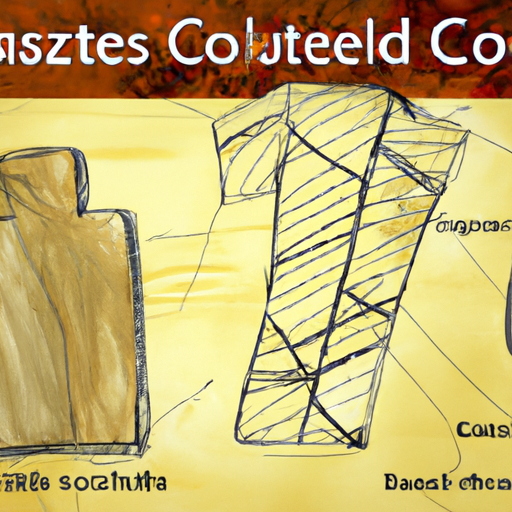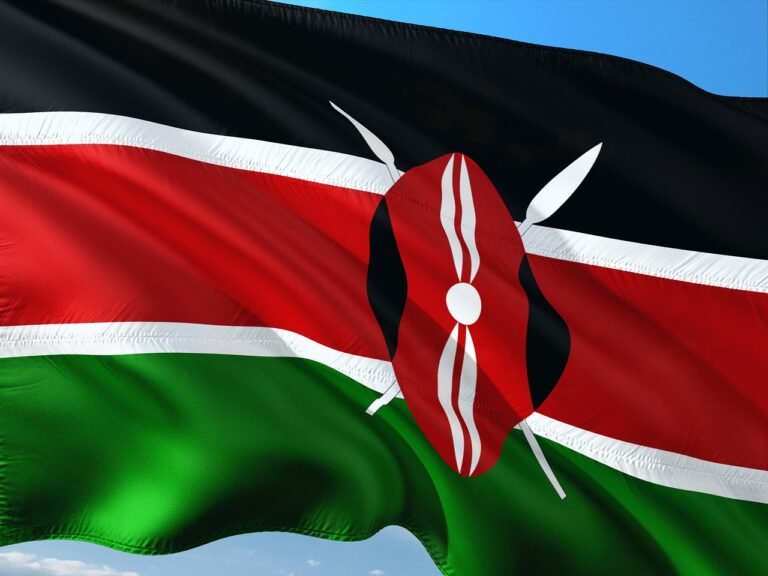What Was The Shifta War, And When Did It Take Place?
Have you ever heard of the Shifta War? If not, allow me to enlighten you. The Shifta War was a conflict that occurred in East Africa, specifically in the regions of Kenya and Somalia. Lasting from 1963 to 1967, this war was fought between the Kenyan military and ethnic Somali secessionist groups known as the Shifta. While the war may have faded into the pages of history, its significance and impact on the region should not be overlooked. Let’s unravel the details and uncover the lesser-known history of the Shifta War.
Background of the Shifta War
Emergence of the Somali Shifta Movement
The Somali Shifta Movement was a separatist insurgency that emerged in the 1960s in the northeastern region of Kenya, bordering Somalia. The movement aimed to unite ethnic Somalis living in Kenya with their counterparts in Somalia, seeking to establish an independent Greater Somalia. Frustrated by perceived marginalization and unequal treatment, the Shifta movement resorted to armed struggle as a means to achieve their goals.
Causes of the Shifta War
The Shifta War was primarily driven by a combination of political, social, and economic factors. Ethnic tensions, fueled by historical grievances and a sense of marginalization, played a significant role in the emergence of the Shifta movement. The Somali community in Kenya felt excluded from political power and economic opportunities, leading to a growing sense of alienation and frustration. Additionally, the arbitrary borders imposed by colonial powers created divisions among ethnic Somali populations, fueling the desire for territorial unity.
Early Shifta attacks and the response of the Kenyan government
The Shifta movement began launching attacks on government installations, police stations, and civilian infrastructure, threatening the stability of the region. These attacks intensified in the early 1960s, prompting Kenya to respond with increased military presence and emergency regulations. The Kenyan government declared a state of emergency in the affected areas, granting security forces extended powers to suppress the insurgency. Despite these measures, the Shifta attacks continued to escalate, leading to a prolonged and devastating conflict.
Timeline of the Shifta War
Shifta attacks escalate
As the Shifta movement gained momentum, their attacks became more frequent and intense. They targeted key economic and military installations, as well as civilian populations, attempting to weaken the Kenyan government’s control in the region. These attacks severely disrupted daily life and contributed to a climate of fear and instability.
Emergency regulations imposed
To counter the escalating insurgency, the Kenyan government imposed emergency regulations in the affected areas. These regulations granted security forces additional powers to arrest, detain, and question suspected Shifta sympathizers. Curfews were also imposed to restrict movement, with the aim of curbing the activities of the Shifta and ensuring the safety of the population.
Deployment of the Kenyan military
In response to the intensifying Shifta attacks, the Kenyan government deployed the military to the region. The military’s primary objective was to neutralize Shifta fighters, protect civilian populations, and restore law and order. The military presence provided a significant boost to the government’s efforts to counter the insurgency, but the conflict continued to escalate despite these measures.
Kenyan government’s attempt for a peaceful resolution
Recognizing the need for a peaceful resolution to the conflict, the Kenyan government initiated negotiations with Somali leaders and other stakeholders. These talks aimed to address the underlying grievances of the Shifta movement and find a mutually acceptable solution. However, the negotiations faced significant challenges, with deeply entrenched positions and a lack of trust between the parties involved.
Impact of the Shifta War
Humanitarian consequences
The Shifta War had severe humanitarian consequences, with both the civilian population and combatants bearing the brunt of the conflict. The fighting resulted in numerous casualties, including deaths and injuries. Disruptions to healthcare services, food insecurity, and forced displacement further exacerbated the humanitarian crisis in the region.
Displacement of populations
The Shifta War led to large-scale population displacement, with many civilians forced to flee their homes to escape the fighting. Internal displacement camps were established to provide shelter and support to those affected. However, the conditions in these camps often fell short of basic standards, leading to further hardships for displaced populations.
Economic impact on the region
The protracted Shifta War had a significant economic impact on the region, affecting trade, agriculture, and infrastructure development. The insecurity caused by the insurgency hampered economic activities, leading to a decline in productivity and limited access to essential services. The long-term economic consequences of the conflict further exacerbated the existing socio-economic challenges faced by the affected communities.
Political implications
The Shifta War had profound political implications for both Kenya and Somalia. In Kenya, the conflict highlighted the ethnic tensions and grievances simmering beneath the surface, underscoring the need for inclusive governance and equitable distribution of resources. In Somalia, the Shifta movement represented a manifestation of the pan-Somali sentiment and aspirations for a Greater Somalia, which had implications for the stability of the region.
Kenyan Counterinsurgency Strategies
Establishment of security forces and fortified camps
To confront the Shifta insurgency, Kenyan security forces were bolstered, and fortified camps were established in strategic locations. These camps served as operational bases for military operations and also provided security and protection for civilian populations residing in the region.
Creation of local defense forces
The Kenyan government also established local defense forces composed of community members to collaborate with the security forces in countering the Shifta insurgency. These forces played a crucial role in gathering intelligence, providing local knowledge, and assisting in maintaining security in their respective communities.
Military campaigns against the Shifta
The Kenyan military launched counterinsurgency campaigns against the Shifta, aiming to weaken their capabilities and restore government control. These campaigns involved targeted operations to disrupt Shifta networks, destroy their infrastructure, and dismantle their support mechanisms.
Communal reconciliation efforts
In addition to military strategies, the Kenyan government also pursued communal reconciliation efforts to address the underlying grievances fueling the Shifta insurgency. These efforts aimed to foster dialogue, rebuild trust, and promote social cohesion among the different communities affected by the conflict.
International Involvement in the Shifta War
The role of the British colonial administration
During the initial stages of the Shifta War, Kenya was still under British colonial rule. The British administration played a significant role in providing military support and expertise to the Kenyan government in countering the insurgency. Their involvement reflected their strategic interests in maintaining stability, security, and protecting their colonial territories.
Neighboring countries’ engagement
Neighboring countries, especially Somalia, had a vested interest in the outcome of the Shifta War. Somalia’s support for the Shifta movement was driven by their goal of establishing a Greater Somalia encompassing ethnic Somali populations in both Kenya and Somalia. This support included providing financial assistance, training, and safe havens for Shifta fighters.
External support to the Shifta
The Shifta movement also received support from various external actors sympathetic to their cause. This support ranged from financing, weapons, and logistical assistance. These external actors saw the Shifta movement as a vehicle for advancing their own political agendas or ideological aspirations.
Efforts for diplomatic intervention
As the Shifta War continued, international actors, including the United Nations and concerned neighboring countries, sought diplomatic avenues to find a peaceful resolution to the conflict. Diplomatic efforts focused on facilitating negotiations, encouraging dialogue, and addressing the root causes of the insurgency.
Decline and Aftermath of the Shifta War
Shifta movement weakened
Over time, sustained military pressure and the erosion of external support weakened the Shifta movement. The Kenyan government’s counterinsurgency strategies, coupled with diplomatic efforts and the loss of key leaders among the Shifta, contributed to their diminished strength and influence.
Peace negotiations and the signing of a ceasefire
Despite the challenges faced during peace negotiations, diplomatic efforts eventually led to a breakthrough. In 1967, the Kenyan government and Somali leaders signed a ceasefire agreement, officially ending the Shifta War. The agreement recognized the need for greater inclusion, resource-sharing, and autonomy for Somali-majority regions within the framework of a unified Kenya.
Post-war reconstruction and reconciliation
In the aftermath of the Shifta War, post-war reconstruction and reconciliation efforts were launched in the affected regions. These efforts aimed to rebuild infrastructure, reintegrate displaced populations, and promote social cohesion among ethnic communities. However, the wounds caused by the conflict took time to heal, and the effects of the war continued to be felt for years to come.
Legacy of the Shifta War
The Shifta War left a lasting impact on the affected communities and the broader region. It highlighted the importance of addressing deep-seated grievances and pursuing inclusive governance to prevent the recurrence of similar conflicts. The war also underscored the necessity of responsive and effective counterinsurgency strategies in defeating separatist movements.
Historical Significance of the Shifta War
Effects on the self-determination of ethnic Somalis
The Shifta War had a significant impact on the self-determination aspirations of ethnic Somali populations in the region. While the Shifta movement did not achieve its ultimate goal of a Greater Somalia, the conflict drew attention to the ethnic Somali community’s concerns and contributed to ongoing discussions on regional autonomy and representation.
Influence on regional conflicts and territorial disputes
The Shifta War’s legacy extended beyond the borders of Kenya, influencing regional conflicts and territorial disputes. It served as a reference point for other ethnonationalist movements and rebellions, highlighting the potential for cross-border support and the challenges of addressing identity-based grievances in a multi-ethnic society.
Lessons learned from the counterinsurgency efforts
The Shifta War provided valuable lessons in counterinsurgency strategies, highlighting the importance of addressing both the root causes and the immediate security challenges presented by such movements. The conflict emphasized the need for a comprehensive and multifaceted approach, combining security measures, socio-economic development, and political engagement.
Shifta War as a case study in conflict resolution
The Shifta War stands as a case study in conflict resolution, illustrating the complexities and challenges of negotiating with ethnonationalist movements. It offers insights into the importance of inclusivity, trust-building, and addressing underlying grievances to achieve a sustainable and peaceful resolution to such conflicts.
Media Coverage and Documentation of the Shifta War
Journalistic accounts and reports
Throughout the Shifta War, journalists provided coverage of the conflict, documenting the experiences of those affected and shedding light on the evolving dynamics of the insurgency. Their reports formed an essential source of information for both local and international audiences, shaping public opinion and understanding of the conflict.
Photographic and video documentation
Photographs and videos captured during the Shifta War offered visual evidence of the devastation and upheaval caused by the conflict. These visual records provide a glimpse into the lived experiences of communities affected by the war, adding an additional layer of understanding to the conflict narrative.
Official archives and government publications
Official archives and government publications, such as official reports and statements, offer valuable insights into the decision-making processes, policies, and strategies employed during the Shifta War. These documents provide a historical record of the conflict and the government’s perspective on the events that unfolded.
Academic research and analysis
Academic research and analysis have played a crucial role in deepening our understanding of the Shifta War. Scholars have examined the conflict from various angles, exploring its historical, political, and social dimensions. This research contributes to a broader understanding of the conflict’s causes, consequences, and lessons learned.
Comparisons with Other Insurgencies or Ethnonationalist Movements
Similarities with other African independence struggles
The Shifta War shares some similarities with other African independence struggles of the time. Like many African countries, Kenya faced challenges in managing ethnonationalist aspirations in the aftermath of colonial rule. The Shifta movement can be viewed in the broader context of African decolonization and the struggles for self-determination in multi-ethnic countries.
Contrasts with guerrilla warfare in other regions
While the Shifta War had similarities with other conflicts, it also had unique characteristics. The nature of the insurgency, the motivations of the Shifta movement, and the responses of the Kenyan government distinguish the conflict from other guerrilla warfare contexts. These distinctions highlight the importance of understanding the specific dynamics of each conflict to develop effective counterinsurgency strategies.
Shifta War in the context of ethnonationalist movements
The Shifta War can be examined within the broader context of ethnonationalist movements around the world. It exemplifies the challenges faced by multi-ethnic societies in addressing competing identity-based narratives and aspirations for self-determination. The conflict also underscores the importance of inclusive governance structures and equitable resource distribution to prevent the emergence of such movements.
Lessons for counterinsurgency strategies in other conflicts
The counterinsurgency strategies employed during the Shifta War offer valuable lessons for addressing similar conflicts in other contexts. The need for a comprehensive approach that addresses the root causes, incorporates local populations, and pursues political engagement is essential in countering insurgencies driven by ethnonationalist aspirations.
Contemporary Relevance and Implications of the Shifta War
Current territorial disputes and secessionist movements
The Shifta War’s legacy continues to resonate in contemporary territorial disputes and secessionist movements. The dynamics of ethnic tensions, grievances, and demands for self-determination persist in various regions worldwide. Understanding the historical context and lessons from the Shifta War can inform efforts to address such conflicts and promote peaceful resolutions.
Impact on relations between Kenya and Somalia
The Shifta War had a profound impact on relations between Kenya and Somalia, straining their diplomatic ties for many years. The conflict underscored the potential for cross-border tensions and the need for dialogue and cooperation to address shared challenges.
Challenges in managing ethnic tensions
The Shifta War highlights the challenges faced by societies in managing ethnic tensions and grievances. It serves as a reminder of the importance of inclusive governance, equitable resource distribution, and the protection of minority rights to address these tensions effectively and prevent the escalation of conflicts.
Role of regional stability in preventing future insurgencies
The Shifta War’s regional implications demonstrate the significance of regional stability in preventing future insurgencies and conflicts. Cooperation among neighboring countries, addressal of shared concerns, and regional security partnerships can contribute to fostering stability and preventing the emergence of similar movements.
In conclusion, the Shifta War, a separatist insurgency in northeastern Kenya, had significant historical significance and lasting humanitarian, economic, and political consequences. It showcased the challenges faced by multi-ethnic societies in addressing ethnonationalist aspirations and highlighted the importance of inclusive governance, equitable development, and effective counterinsurgency strategies. The lessons learned from the Shifta War can inform efforts to address similar conflicts globally and promote peaceful resolutions based on dialogue, reconciliation, and understanding.







